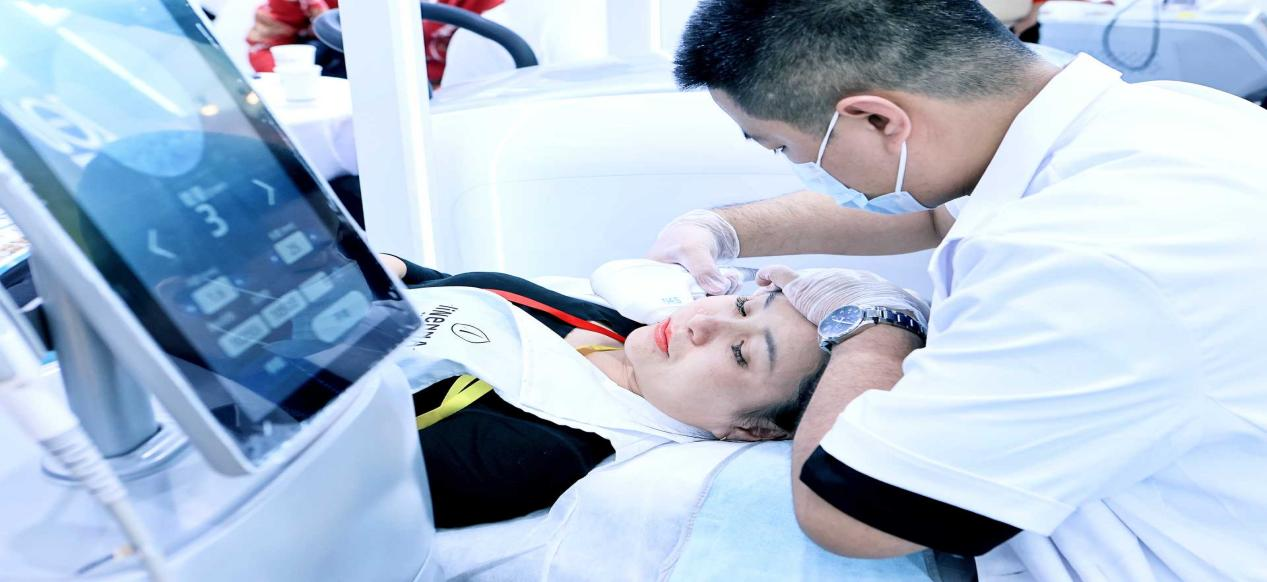By 2025, HIFU technology has surged at an annual growth rate of 45%, becoming the preferred non-invasive anti-aging solution across 90+ countries. From a “cutting-edge innovation” to a mainstream staple, its rise is fueled by technological breakthroughs, consumer evolution, and clinical validation.
Driver 1: Multi-Layered Technology Solving Superficial Limitations
Traditional anti-aging methods often target a single skin layer, but the HIFU’s “3D Energy Matrix” simultaneously addresses three depths: 1.5mm (epidermal repair), 3.0mm (collagen regeneration), and 4.5mm (fascia lifting). This creates an “inside-out” rejuvenation cycle. A 2025 study by the International Skin Anti-Aging Alliance (ISAA) confirms that combined multi-layer treatments deliver 2.3x better facial rejuvenation and 18+ months of lasting effects compared to single-layer therapies. Dr. Claudia Müller, a leading dermatologist in Berlin, notes: “This is the first device to mimic surgical lifting without scalpels, making it a game-changer for patients seeking natural results.”
Driver 2: Safety and Efficiency Redefine Consumer Choices
The demand for “zero downtime” and immediate results has skyrocketed. The HIFU’s fifth-generation AI temperature control system reduces thermal injury risks from 5% (traditional devices) to 0.5%, thanks to millisecond-level response precision. According to the 2025 Global Aesthetic Consumption Report, 78% of users choose the technology for its “no recovery time,” with a single 30-minute session improving jawline definition by 32% and nasolabial folds by 40%. Its 95% clinical safety rate earned it a spot in the U.S. FDA’s “Fast-Track Innovation Program,” accelerating adoption in 30+ markets, including the EU and South Korea.
Driver 3: Democratization Meets Luxury Customization
The HIFU’s dual-track strategy bridges affordability and exclusivity. In 2025, session costs dropped to $400–$1,100 in emerging markets like India and Brazil, driving a 120% spike in users across tier-2/3 cities. Meanwhile, its luxury tier thrives: a collaboration with LVMH Group offers bespoke “Anti-Aging Concierge” packages priced over $13,800 per course, featuring gold-plated handpieces and VIP aftercare. Bain & Company’s 2025 analysis reveals this “pyramid model” captures 75% of the global anti-aging demographic, from budget-conscious millennials to ultra-high-net-worth individuals.
Global Cultural Adaptation: Regional Success Stories
- Europe: In Paris and Milan, 72% of users prioritize subtle, natural results over dramatic changes. Clinics report a 90% retention rate for annual maintenance programs.
- North America: Focused on “preventive anti-aging,” 45% of users are aged 25–34. New York clinics integrate the treatment with AI skin diagnostics for personalized plans.
- Middle East: Customizable energy settings accommodate diverse skin tones, boosting adoption in Dubai by 135% in 2025.
Future Vision: From Anti-Aging Tool to Holistic Health Platform
Leading brands are integrating AI skin analysis, biomarker tracking, and 5G connectivity to create end-to-end “beauty health” ecosystems. Frost & Sullivan predicts the technology’s services market will hit $5.5 billion by 2026, as anti-aging transitions from a “lifestyle choice” to a health imperative.
Why It Matters Globally
The HIFU’s dominance reflects a paradigm shift: consumers now demand medical-grade efficacy paired with luxury experiences. As Dr. Emily Tan of the World Dermatology Federation states, “This isn’t just about looking younger—it’s about redefining aging with science and accessibility.” With projections showing 60% of adults over 30 opting for non-invasive treatments by 2030, the ultrasound scalpel isn’t just leading the market—it’s shaping the future of global wellness.
Data sources: ISAA, U.S. FDA, Bain & Company 2025 Report, Frost & Sullivan, World Dermatology Federation.
Post time: May-13-2025
